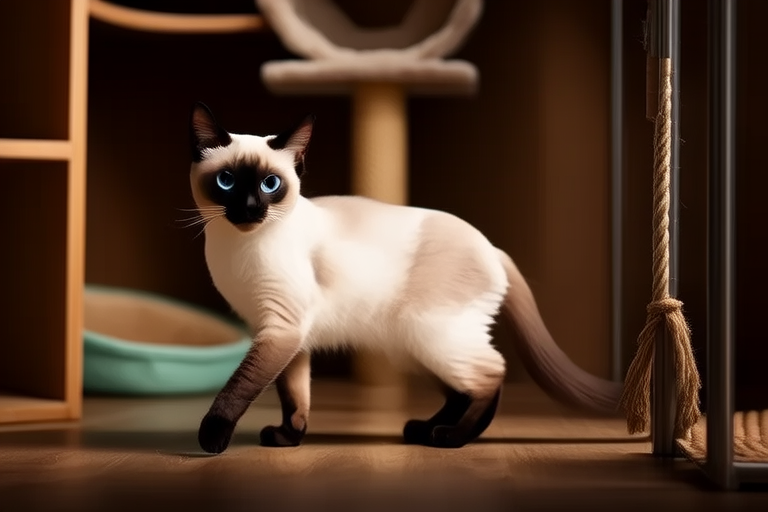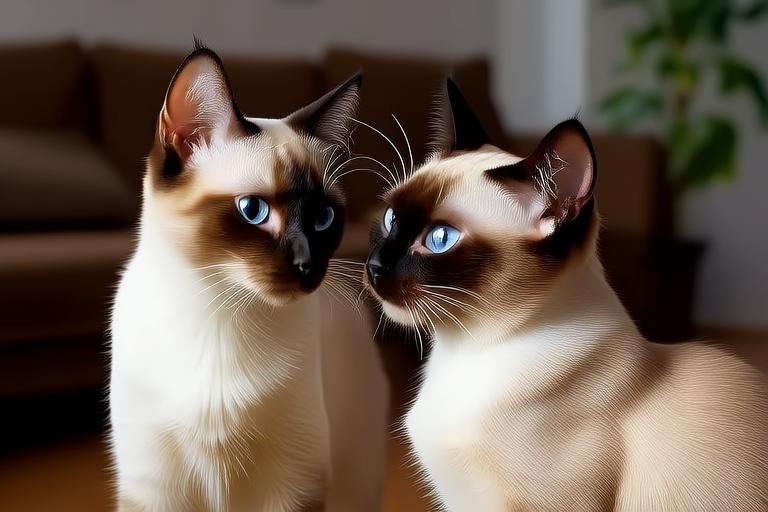
Adventures with a Siamese: A Journey into the World of One Chatty Companion
Welcome to the fascinating world of Siamese cats! These elegant creatures have captured the hearts of many with their striking blue almond-shaped eyes, sleek coats, and unmistakable vocalizations. My journey with my Siamese, Luna, has been nothing short of an adventure, filled with laughter, learning, and a deep appreciation for her unique traits. In this article, I will share personal anecdotes that illustrate the distinct characteristics of owning a Siamese cat, including their vocal nature, intelligence, and social behavior. Additionally, I’ll provide tips for potential owners and insights into the breed’s rich history.
The History of Siamese Cats
The origins of the Siamese cat can be traced back to Thailand, formerly known as Siam, where they were considered sacred and often kept in temples or royal households. These cats were believed to be guardians of the afterlife and were sometimes even buried alongside their human companions. The first Siamese cats arrived in England in the late 19th century, and by the early 20th century, they had become popular pets across Europe and North America.
Siamese cats are known for their striking blue almond-shaped eyes, which are a result of a genetic mutation that restricts the production of pigment in the iris. This mutation also affects the color of their coat, resulting in a distinctive pattern of darker points on their ears, face, paws, and tail against a lighter body. The breed’s intelligence, social behavior, and vocal nature have made them a favorite among cat enthusiasts worldwide.
Introducing Luna: My Siamese Companion
My journey with Luna began when she was just a kitten. Her playful antics and curious nature immediately drew me in, and before I knew it, she had won my heart. Luna is a classic seal point Siamese, with her signature dark points and a creamy white body. Her eyes, a deep sapphire blue, always seem to hold a story, and they follow me around the house with an intensity that never fails to amuse me.
One of the first things I noticed about Luna was her incredible vocal range. Siamese cats are known for being chatterboxes, and Luna certainly lives up to that reputation. She has a wide array of sounds, from soft purrs to loud meows, chirps, and trills. She communicates with me constantly, letting me know when she wants attention, food, or simply to play. It’s almost as if she’s having a conversation with me, and I’ve grown to understand her various tones and pitches over time.
The Vocal Nature of Siamese Cats
One of the most defining characteristics of Siamese cats is their vocal nature. They are not afraid to make their presence known, and they will often “talk” to their owners, demanding attention or expressing their feelings. This can be both endearing and challenging, especially for those who prefer a quieter pet. However, once you get used to their vocalizations, it becomes part of the charm of living with a Siamese.
Luna, for example, has a distinct meow that she uses when she wants to be fed. It’s a high-pitched, insistent sound that leaves no room for misunderstanding. Another time, she developed a new sound when she wanted to go outside. She would stand by the door, meowing in a specific rhythm until I opened it for her. Over time, I learned to recognize these different vocal cues and respond accordingly.
Siamese cats are also known to be quite expressive with their body language. They use their tails, ears, and postures to convey their emotions. For instance, when Luna is happy, her tail will flick back and forth, and her ears will be perked up. When she’s feeling anxious or stressed, her tail may puff out, and her ears might flatten against her head. Understanding these non-verbal cues can help you better connect with your Siamese and address any concerns they may have.
Intelligence and Problem-Solving Skills
Siamese cats are highly intelligent and curious creatures, always seeking stimulation and mental challenges. Luna is no exception. She loves to play with interactive toys that require problem-solving skills, such as puzzle feeders or treat-dispensing balls. These toys keep her engaged and mentally sharp, preventing boredom and destructive behavior.
One day, I left a bag of treats on the counter, thinking Luna wouldn’t be able to reach it. Boy, was I wrong! Within minutes, she had figured out how to jump onto the countertop and retrieve the bag. From that day on, I learned to keep all food items securely stored away from her reach. Luna’s ability to think critically and find solutions to problems is one of the reasons why Siamese cats are often referred to as the “dogs of the cat world.”
Another example of Luna’s intelligence is her ability to learn commands and tricks. With some patience and positive reinforcement, she has mastered basic commands like “sit,” “come,” and “stay.” She even enjoys playing fetch, much like a dog. This level of interaction makes her a delightful companion, and it’s a testament to her sharp mind and eagerness to please.
Social Behavior and Bonding
Siamese cats are known for their strong bonds with their human companions. They thrive on social interaction and often form close relationships with their owners, following them around the house and seeking physical affection. Luna is particularly affectionate, and she enjoys being petted, brushed, and cuddled. She will often curl up next to me on the couch or snuggle under the covers at night.
One of the most touching moments I’ve shared with Luna occurred during a family gathering. She had been sitting quietly in the corner, observing the commotion. As the guests started to leave, she suddenly jumped onto my lap and nestled herself between me and my partner. It was clear that she felt safe and secure in our presence and wanted to ensure that we stayed together. Moments like these remind me of the deep bond I share with Luna and how much she values our companionship.
Siamese cats are also very social with other animals, especially if introduced at a young age. Luna gets along well with our dog, Max, and they often play together or nap side by side. However, it’s important to note that each cat is unique, and some Siamese may be more reserved or territorial. It’s crucial to introduce them gradually and monitor their interactions closely.
Tips for Potential Owners
If you’re considering adding a Siamese cat to your family, there are a few things to keep in mind:
- Provide Mental Stimulation: Siamese cats need plenty of mental stimulation to stay happy and healthy. Provide them with interactive toys, puzzle feeders, and scratching posts to keep them engaged.
- Be Prepared for Their Vocal Nature: Siamese cats are known for being chatty, so be prepared for constant communication. While it can be charming, it can also be overwhelming for some people. If you value peace and quiet, you may want to consider a quieter breed.
- Establish Routines: Siamese cats thrive on routine and predictability. Establish regular feeding times, play sessions, and grooming routines to help them feel secure and content.
- Consider Adopting: Many shelters and rescue organizations have Siamese cats available for adoption. By adopting, you’re giving a loving home to a cat in need and avoiding contributing to the pet overpopulation crisis.
Conclusion
Living with a Siamese cat is an enriching experience that offers countless joys and challenges. Their vocal nature, intelligence, and social behavior make them unique and captivating companions. Through my adventures with Luna, I’ve come to appreciate the depth of her personality and the bond we share. Whether she’s meowing for attention, solving puzzles, or snuggling on the couch, she brings a special kind of magic into my life. If you’re looking for a cat that will keep you entertained and engaged, a Siamese might just be the perfect fit for you.






